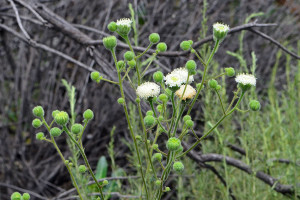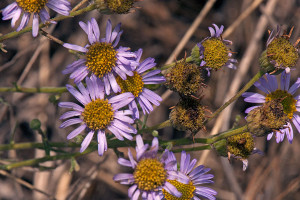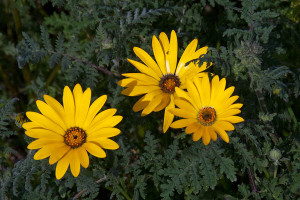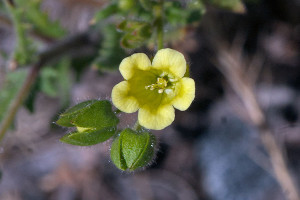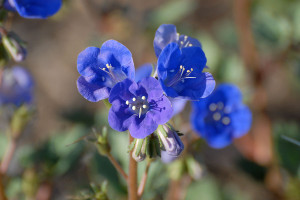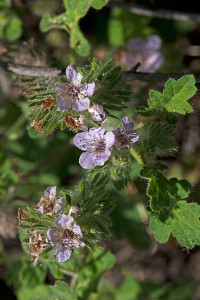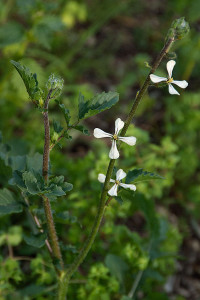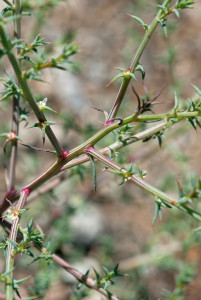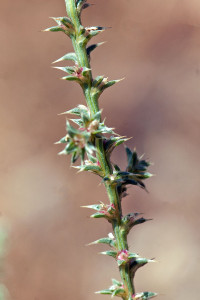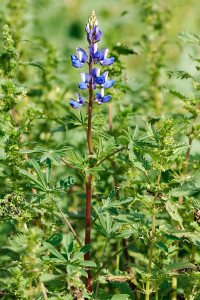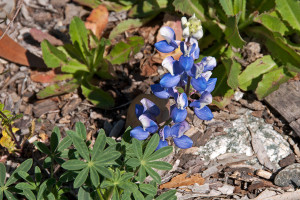We’ve recently updated the BFS Plant List. Here are the changes:
NEW ADDITIONS:
Eleven new plants have been added to the list – five natives, four non-natives, and two California native that appear to have been planted – it seems that someone has been seeding the parkway with wildflowers! They new additions are:
• Sunflower Family (Asteraceae):
- Chaenactis artemisiifolia (White Pincushion) – native. A single plant was spotted growing in the upper Neck.
- Erigeron foliosus var. foliosus (Leafy Fleabane) – native. A number of these are growing in two patches in the East Field burn area.
- Dimorphotheca sinuata (African Daisy) – non-native. This southern African native is widely grown as an ornamental and has naturalized in Southern California and Arizona. At the BFS, several plants were spotted in the burn area west of the drive.
• Borage Family (Boraginaceae)
- Emmenanthe penduliflora var. penduliflora (Whispering Bells) – native. A single plant of this charming Phacelia relative was spotted in the sage scrub southeast of pHake Lake.
- Phacelia campanularia (Desert Bluebells) – CA native, but not endemic to the BFS. Spotted in the parkway where it was likely seeded as part of a wildflower mix.
- Phacelia cicutaria var. hispida (Caterpillar Phacelia) – native. Several plants were growing next to the trail on the south side of pHake Lake. Although recorded at other sites in Claremont, this species had not previously been reported at the BFS.
• Mustard Family (Brassicaceae)
- Eruca vesicaria ssp. sativa (Garden Rocket) – non-native. Salad anyone? Several plants of Garden Rocket, also known as arugula, appeared behind the infirmary. This Mediterranean native has naturalized in Southern California, but is not considered invasive.
• Goosefoot Family (Chenopodiaceae)
- Salsola australis (Russian Thistle) – non-native
- Salsola tragus (Russian Thistle) – non-native
Several plants of two species known as Russian Thistle or tumbleweed were spotted in the East Field. Besides being quite prickly, these Eurasian natives contain high levels of toxic oxalates and serve as an alternate host for a leaf-hopper that carries a virus of important agricultural crops. Although the California Invasive Plant Council considers their impact “Limited”, we plan to remove them whenever we spot them.
• Legume (Bean & Pea) Family (Fabaceae)
- Lupinus succulentus (Arroyo Lupine) – native. Several plants of Arroyo Lupine appeared behind the field house.
- Lupinus nanus (Sky Lupine) – CA native, but not endemic to the BFS Like P. campanularia, L. nanus was spotted in the parkway where, like the Desert Bluebells, it was likely seeded as part of a wildflower mix.
NAME CHANGES:
Advances in plant phylogeny – largely through the newer molecular techniquest – have led to new understanding of the relationships of many plant species and, in some cases, to changes in taxonom. Here are the recent name changes of BFS plants:
- Chamaesyce albomarginata to Euphorbia albomarginata
- Chamaesyce serpyllifolia to Euphorbia serpyllifolia
- Trifolium gracilentum var. gracilentum to Trifolium gracilentum
- Juglans californica var. californica to Juglans californica
- Calandrinia ciliata to Calandrinia menziesii
- Anagallis arvensis to Lysimachia arvensis
- Phoradendron serotinum ssp. macrophyllum to Phoradendron leucarpum ssp. macrophyllum
SUBTRACTIONS:
We have not been able to confirm the following plants as being present on the BFS; consequently, we’ve moved them to the list of “Unconfirmed plant reports”. If you spot any of these at the BFS, please let us know, and we’ll document them and restore them to the main plant list:
- Baccharis salicina (Emory Baccharis)
- Hazardia squarrosa (Saw-toothed Goldenbush)
- Isocoma menziesii (Coastal Goldenbush, Menzie’s Goldenbush)
- Epilobium canum ssp. canum (California Fuchsia)
- Eulobus californicus (Mustard Evening-Primrose)
- Navarretia hamata (Hooked Navarretia)
